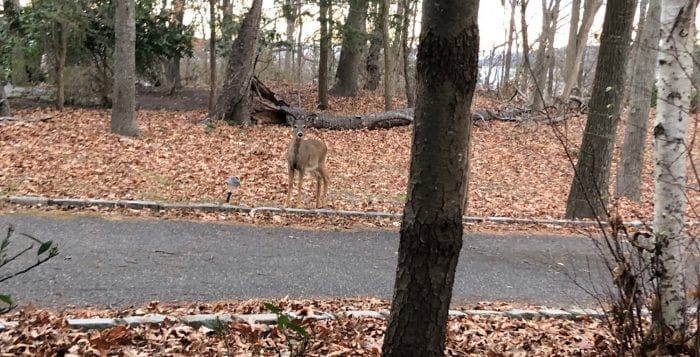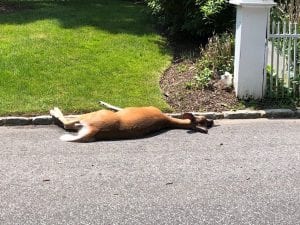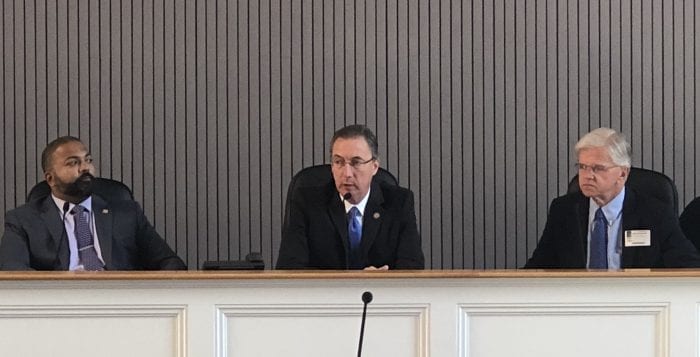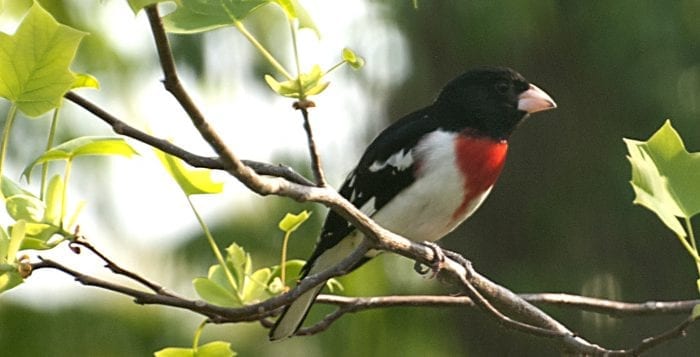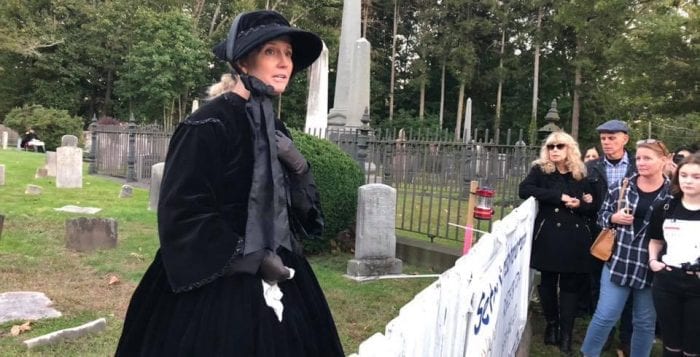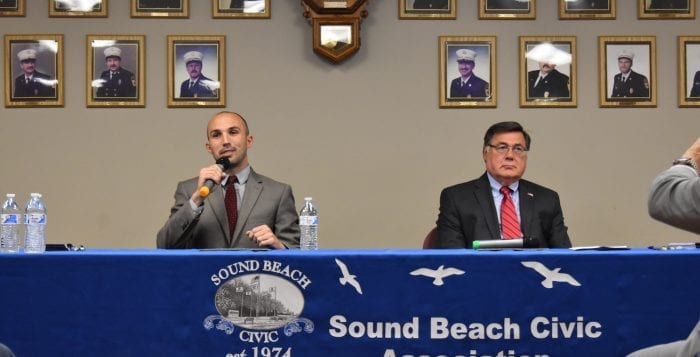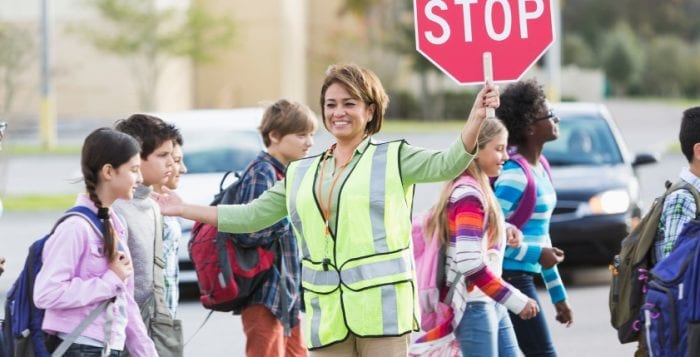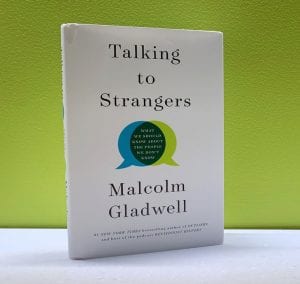Road issues and health/odor complaints from the town landfill have become a major bane for residents in the Town of Brookhaven, and local incumbents and challengers have made it a major point of their election campaigns.
The Sound Beach Civic Association hosted debates Oct. 8 for Brookhaven town candidates in The Village Beacon Record area as Long Island quickly slides toward Election Day Nov. 5.
The room was flanked with both Republican, Democratic and a few third-party candidates.
Perhaps the most contentious town race is for supervisor, with young Democratic challenger Will Ferraro facing the well-established town Supervisor Ed Romaine (R).
Romaine lauded his and the town’s accomplishments in the seven years since he was first put in office during a special election in 2012. He talked about recent intermunicipal agreements combining districts to save residents money, including ending the Sound Beach and Setauket water districts that gave a small check to residents of those defunct districts.
In terms of roads, Romaine cited the proposed town budget that includes a $150 million pot of funds for the Highway Department from both bonds and reserves from the tentative capital budget.
“I believe in fighting for each and every one of the communities of this town”
– Ed Romaine
Ferraro, who has worked as a legislative analyst for the New York State Assembly and a political activist, spoke of the three main issues of his campaign: the quality of Brookhaven’s roads, a plan to reconfigure the town’s recycling to bring back monthly glass pickup, and a public plan for air quality issues around the town landfill.
“This election is not going to be about credentials, it’s about credibility,” he said.
When an audience member’s question was brought up about the town’s website, saying that it was purposefully convoluted, the supervisor said the town has worked hard to make everything easily available and to make town matters transparent. Ferraro retorted, “I agree with [Romaine] I don’t think it’s intentional, they really think that’s what a website is supposed to look like in 2019.”
The landfill was recently cited by the New York State Department of Environmental Conservation over odor complaints and was ordered to spend $150,000 on the landfill or face a fine of $178,000. Romaine said the odor complaints were from last December and occurred because of the process of currently capping portions of the site in the Brookhaven hamlet. The town is looking to set aside $20 million to deal with the impact of the landfill closing in 2024.
“We are definitely going to look at how we are going to handle solid waste — that is something we will be working with all the communities in Brookhaven,” he said.
Ferraro responded that Romaine was diluting the complaints that residents living close to the landfill have had, both in terms of odor and health issues they claim have come from the dump. He criticized Romaine for leaving his state appointment to the Long Island Regional Planning Council in 2018 and said more needs to be done to test the air quality in the area surrounding the landfill.
The day of the debate, Newsday had published its endorsement for Romaine, who held up a printout to show to the audience. Ferraro said, “that endorsement will be in Newsday tomorrow, it will also be in my cat’s litter box tomorrow,” to the moans of several audience members.
Though he had planned to attend the debate, town Highway Superintendent Dan Losquadro (R) had to cancel at the last minute, and his second-time Democratic challenger Anthony Portesy spoke up instead about his plans to remedy town road issues.
He advocated for his six-point plan, complaining about the town’s practices of “mill and fill” for fixing roads with topcoats that crumble in a short time and for not fixing drainage issues. He also talked about creating a priority list by working with the town council, and then posting that publicly online to see which roads are getting done based on the level of funding. He also called for the need to advocate for more state and federal funding for road repairs.
“We need to get out of this duct tape and Band-Aid operation,” he said. “I want to make sure we’re creating a long-term mission for the Town of Brookhaven.”
Democrat Sarah Deonarine is challenging Councilwoman Jane Bonner (R-Rocky Point) for the District 2 seat.
Bonner said the issue with recycling was the market has collapsed, a problem not just for Brookhaven but for every municipality across the U.S. Since the market for glass has fallen through the floor, the town has been taking glass at drop-off sites and using them for lining the landfill.
“What is better recycling than that?,” she said.
Regarding the landfill, she said the town has steadily increased its landfill closure account to deal with the impacts of when there will be nowhere on the island left to dump ash or debris, though they have taken the odor complaints “very seriously.” She said the best plan is to turn the landfill into an “energy park.”
On the issue of recycling the Democratic challenger cited other towns that currently accept other materials, promising to model their collection system after them. She also called out the town’s response to the DEC’s order regarding the landfill. She said she has “connections” around the island, and with those they could start a work group that could look at the health impacts of the landfill.
“The town should recognize that people are getting sick there, set up our own [odor] hotline, and invest in the people in the area to get better,” she said.
On Monday, Oct. 14, the Sound Beach Civic Association will host a second debate moderated by the Suffolk County League of Women Voters between Suffolk County Legislator Sarah Anker (D-Mount Sinai) and her Republican challenger Gary Pollakusky at the Sound Beach Firehouse located at 152 Sound Beach Blvd. People can come at 6:30 p.m. to write out questions for the debate starting at 7:30 p.m.
Early voting starts Oct. 26, with election day set for Tuesday, Nov. 5. Check back here at The Village Beacon Record Oct. 31 for our annual election issue, featuring debates with all local candidates in our coverage area.


